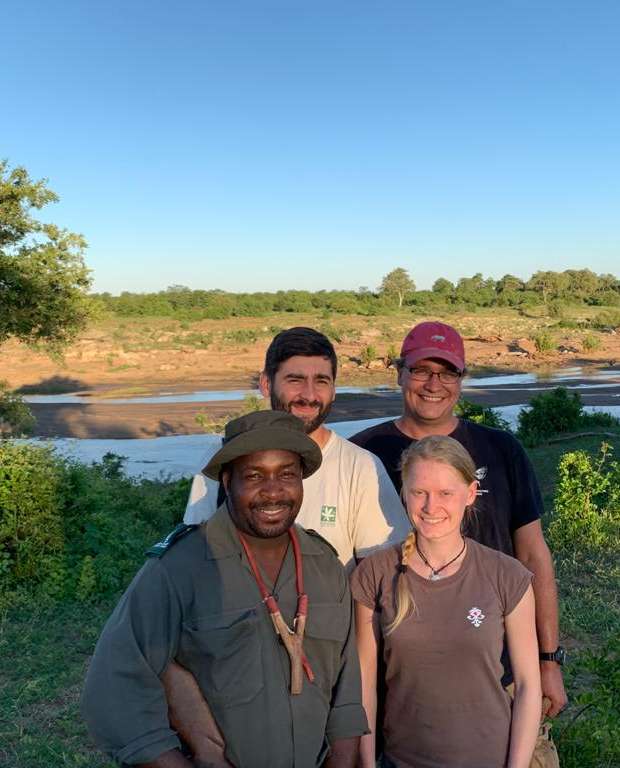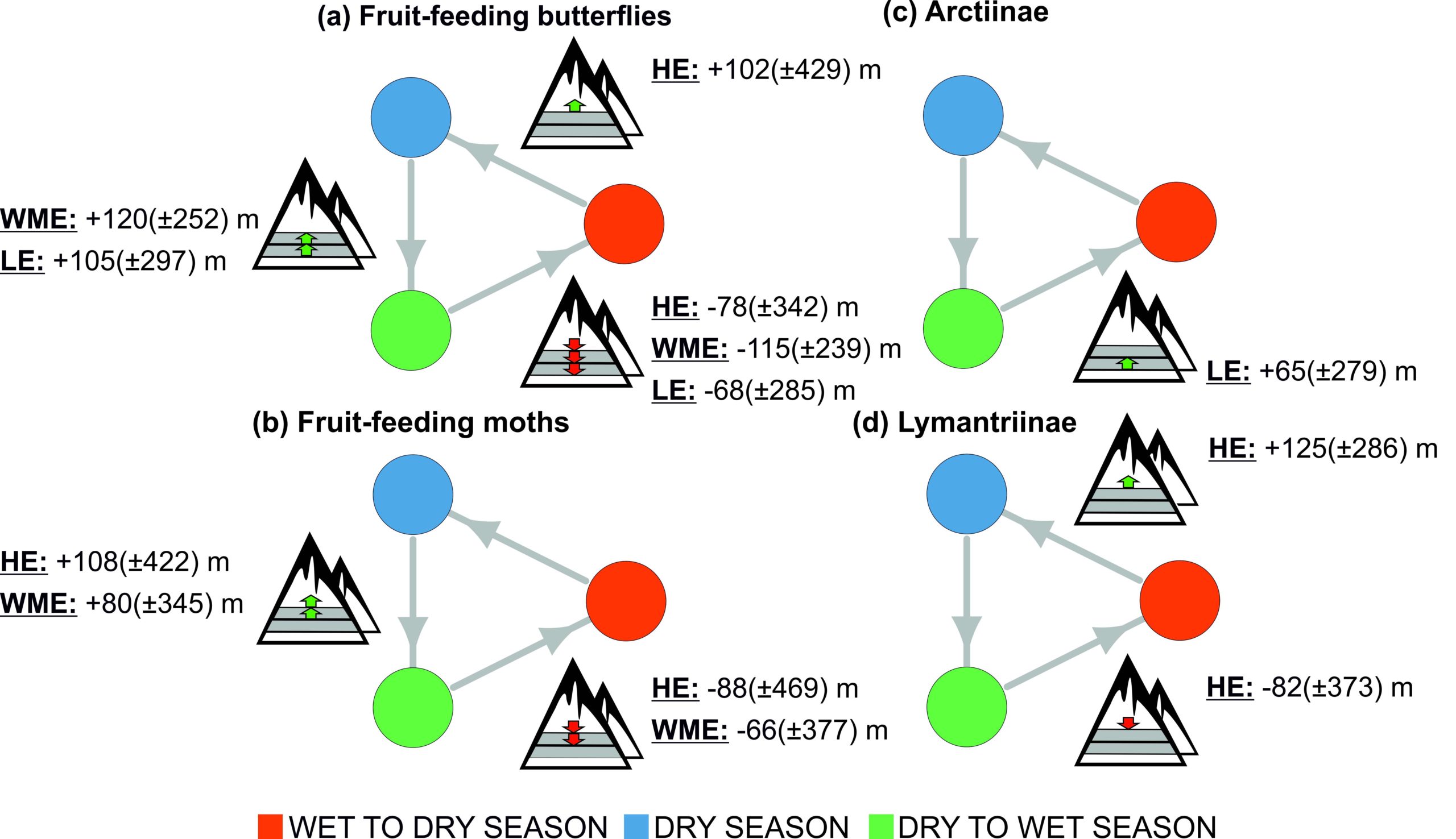In late March, just before the covid lock-down, we have arrived from South African Kruger NP. Rob and Sylvain did the last sampling of insects for the large collaborative research on the role of large herbivores and water availability for savanna biodiversity. We were accompanied by Marketa Stankova setting bat recorders in our plots. This time, everything was smooth and without any problems and we brought a lot of material which will be processed in the next months. After sampling, we stayed in Skukuza and attended the Savanna Science Network Meeting. Sylvain presented his results from our previous project on moth diversity patterns along an environmental productivity gradient in south African savannas. Although our sampling in Kruger is already over, we are sure to find more opportunities to study insects in south African savanna.
Sampling in Kruger NP
New publication on a butterfly pollination system
Our case study of the butterfly pollinated Scadoxus cinnabarinus has just been published in the Arthropod-Plant Interactions journal. Our so far unique system of flowers video recording system was developed on a few case studies on the slopes of Mount Cameroon. The butterfly-pollinated S. cinnabarinus is the second one, which have just led to a publication. We (with Jan as the leading author) confirmed butterflies as the primary pollinators. However, they were supplemented by bees at the upper edge of its elevational range. Therefore, we show that even for particular species, the pollination syndrome concept is a useful tool to predict the primary pollinators. However, its predictability can be reduced under some conditions. We also discussed this should be considered in any large-scaled and multi-taxa studied. Check the paper, Jan prepared beautiful figures! And mainly check Jan’s “video abstract” on the studied pollination system below:
New publication on Afrotropical butterflies
In the last days of 2019, our new publication on understudied Afrotropical butterflies has been published in SHILAP Revista de lepidopterológia, the pdf can be downloaded here. In this study, Rob has participated on the description of unknown females of Euriphene lomaensis, E. taigola and E. bernaudi, and an unknown male of Bebearia inepta. All these species occur in forests of Africa, Rob was involved in the collection (and discovering) of part of the unknown sexes in Liberia and Cameroon. Such smaller studies are surely important for better knowledge on biodiversity of still largely understudied tropical Africa.
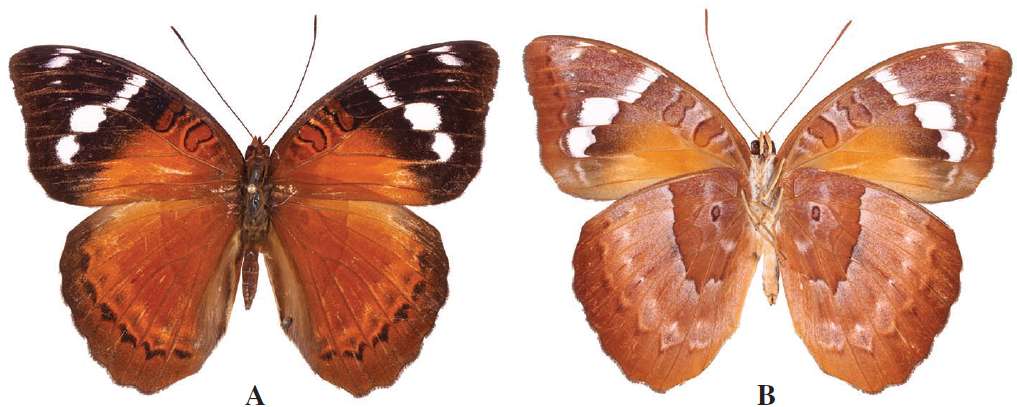
Female of Euriphene bernaudi from Mount Kupe, Cameroon. © SHILAP/Sz. Sáfián
Work in the Krakow museum
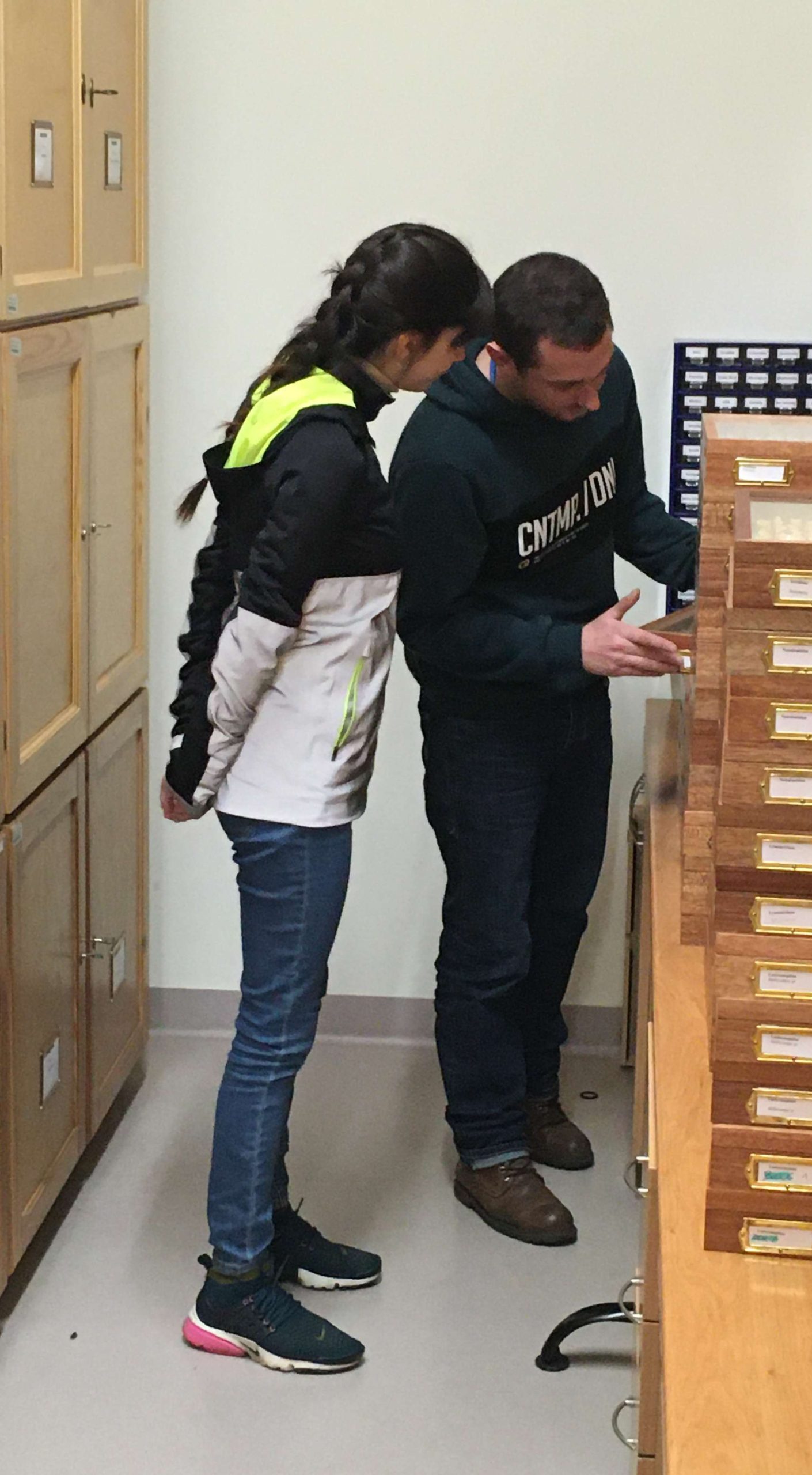
Vincent is introducing how to work with moths to Fotini
After some time, we have continued to process our moth material curated in collections of the Nature Education Centre of the Jagiellonian University in Krakow. The main aim was to introduce our material to Fotini, our new Erasmus intern. For her project, she has been taking pictures of selected moths from Mount Cameroon to investigate their inter-elevational and inter-seasonal variability. Vincent and Jan helped her, while they also worked on other tasks. Rob has brought more material from our other Afrotropical projects and broadened our collaboration with Dr. Tomasz Pyrcz. The visit has been as fruitful and comfortable as all our previous work in the friendly and professional environment.
A sampling trip to Kruger
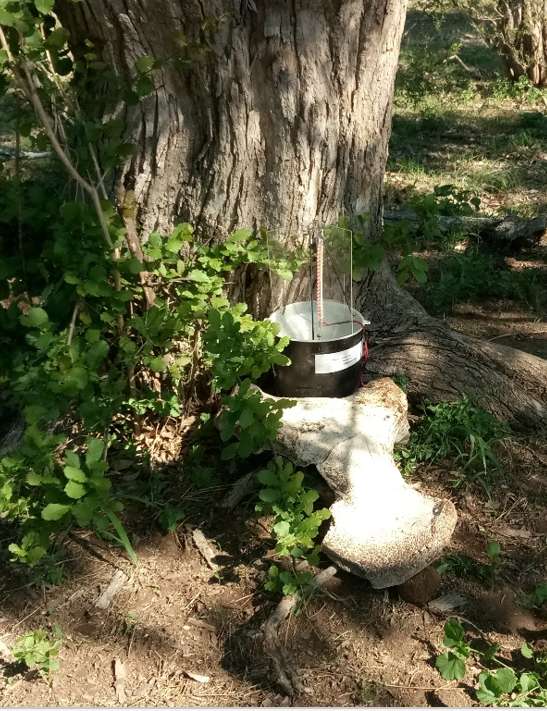
A moth trap in the Kruger NP.
Pajá and Sylvain have spent the past three weeks in the Kruger National Park in South Africa. They continued sampling of moths and recording of bats for the project led by Petr Pysek and David Storch focused on the role of seasonal rivers in dynamics of biodiversity in African savannas. This visit was a bit more adventurous than the previous ones, including storms, getting stuck in between swollen rivers and their fording, or a cancelled flight home. Despite such minor delays,the sampling was successfully finished and they brought material and data from 30 plots in the northern part of the park. This material will be processed in the coming months, whilst Rob and Sylvain are already arranging the last sampling in February/March 2020.
Vincent got the postdoc position!
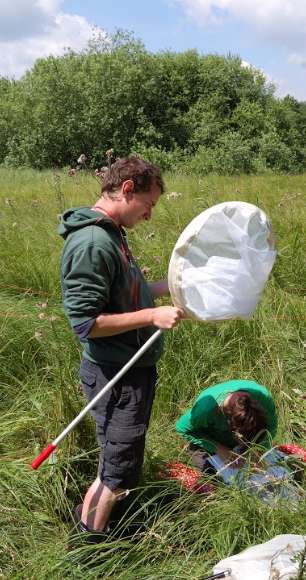 Vincent Maicher has defended his thesis just a few months ago. We are very glad he found his first postdoctoral position almost immediately. From February, he will start working in the Poulsen Ecology Lab at the Duke University in North Carolina, US. He will be working on impacts of forest elephants on tropical rainforests in Gabon, i.e. one of his thesis topics and surprisingly close to our Cameroonian locality. Vincent, congratulations and good luck in the new scientific environment, it has been a big pleasure to work with you!
Vincent Maicher has defended his thesis just a few months ago. We are very glad he found his first postdoctoral position almost immediately. From February, he will start working in the Poulsen Ecology Lab at the Duke University in North Carolina, US. He will be working on impacts of forest elephants on tropical rainforests in Gabon, i.e. one of his thesis topics and surprisingly close to our Cameroonian locality. Vincent, congratulations and good luck in the new scientific environment, it has been a big pleasure to work with you!
New publication on seasonal shifts of lepidopterans along elevation
Recently, our new study on biodiversity patterns of butterflies and moths along the elevational gradient of Mount Cameroon has been published in the Journal of Biogeography. On the huge dataset of almost 1,200 species of lepidopterans sampled at three seasons across four years, we are showing that individual species, as well as patterns of their diversity, shift along elevation seasonally. Therefore, our general understanding of biodiversity patterns along altitude and their causes can be biased by often seasonally-restricted sampling, especially in the tropics. It is also the core chapter of Vincent’s dissertation defended in the last summer. Congrats, Vincent, and thanks to numerous co-authors and collaborators troughout the past years!
Full reference: Maicher V., Safian Sz., Murkwe M., Delabye S., Przybylowicz L., Potocky P., Kobe I.N., Janecek S., Mertens J.E.J., Fokam E.B., Pyrcz T., Dolezal J., Altman J., Horak D., Fiedler K., Tropek R. (in press) Seasonal shifts of biodiversity patterns and species’ elevation ranges of butterflies and moths along a complete rainforest elevational gradient on Mount Cameroon. Journal of Biogeography.
Expedition to montane grasslands of Mt. Cameroon
We have just climbed down from Mount Cameroon. Kobe, Dominik, Stepan, Petra and Rob (together with our priceless Cameroonian assistants) have spent the last four weeks in Afromontane grasslands on Mount Cameroon. We have finally broadened our scope above the timberline and sampled data on pollination networks in the unique and rich montane grasslands. Besides our “common” reconstruction of pollination networks in communities at different elevations, we have also experimentally studied breeding strategies of selected flowering plants. After four years of working in rain forests of Mount Cameroon, this was a great experience and we all are looking forward to have the results processed! In the meantime, we have also some good news from our groups which will be added in the next days.
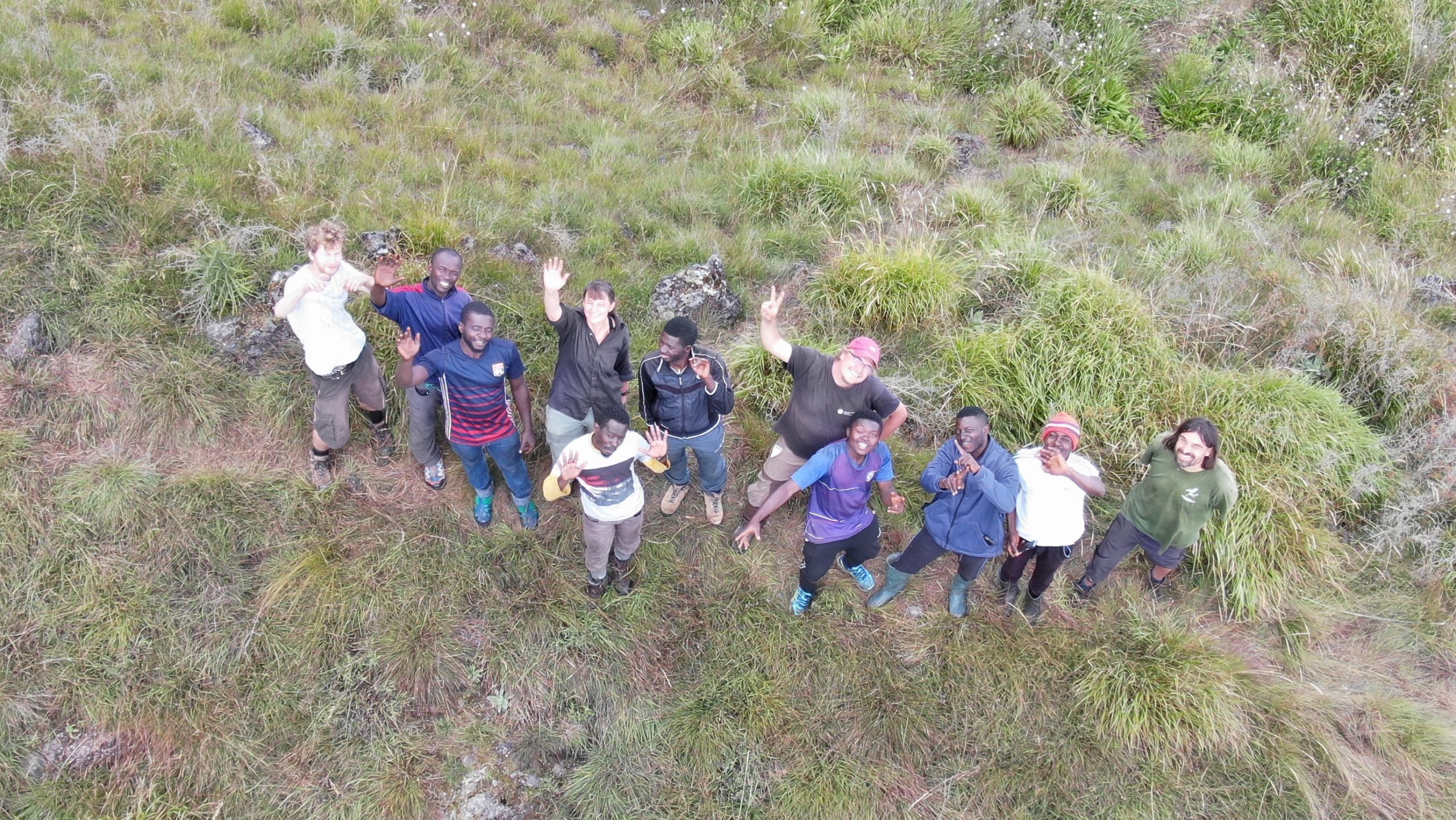
Conference of the Czech Ecological Society
Several members of our groups have attended a biennial meeting of the Czech Society for Ecology – Ekologie 2019. Besides active presentation of our research (Yannick, Jan and Rob gave oral presentations, whereas Pája, Antigone, Kája, Sylvain, Sentiko and Honza presented their results by posters), we left a visible footprint at the conference in other ways as well. Robert and Lenka were among the main conference organisers and Jan edited its’ book of abstracts. Pavla Halamová was awarded for the best student poster! In the picture below, it is hanging behind her right shoulder. And during the meeting, Rob was elected as the president of the Society. Although it is not always easy to evaluate a meeting which you helped organise, but we have enjoyed it a lot!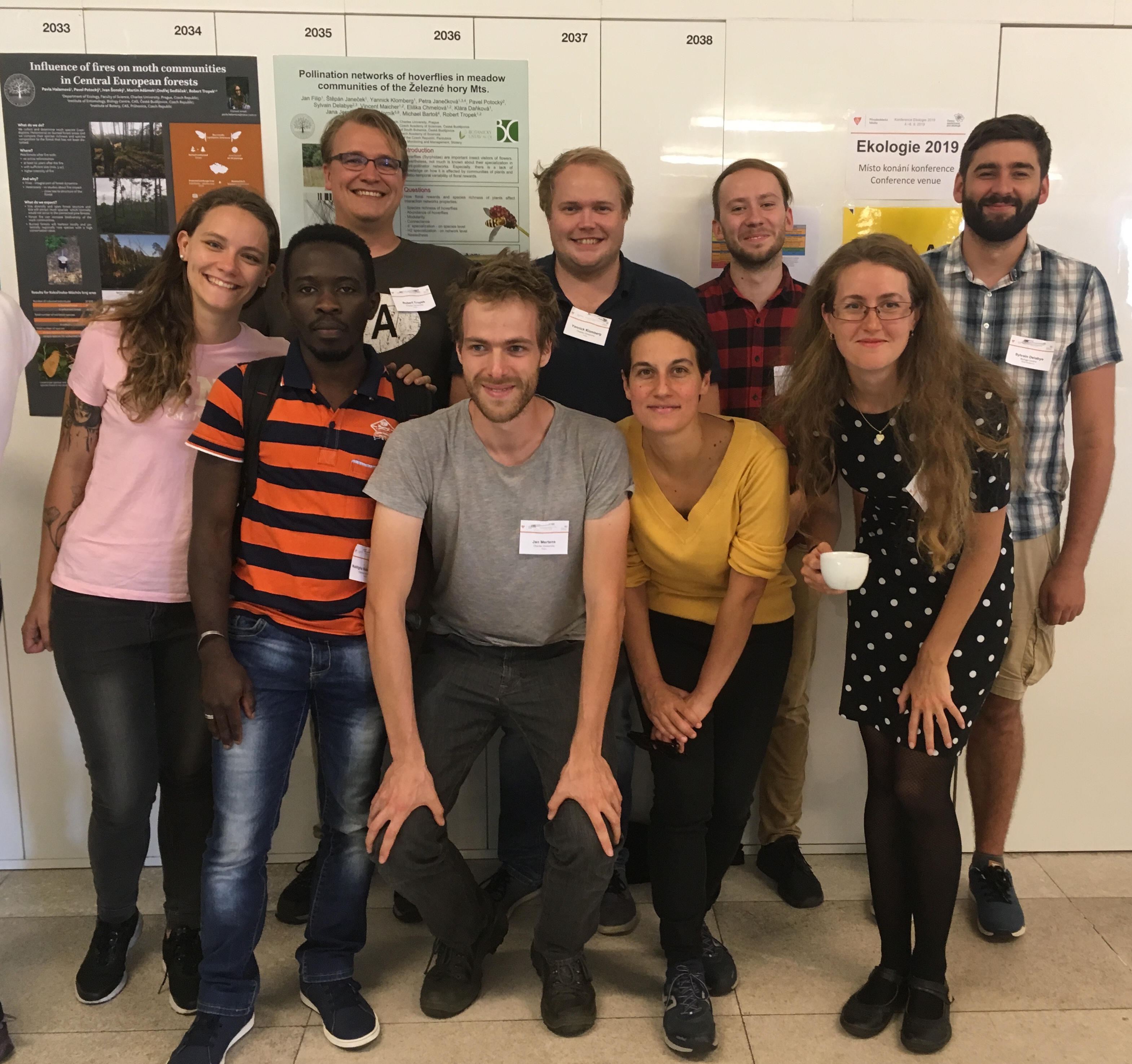
Research of moths after forest fires
Pavla continues with the sampling of data on diversity of moths in previously burnt and undisturbed forests for her master thesis. This year, she samples at the beautiful sandstone landscape of Bohemian Switzerland NP, in northwestern Czech Republic. With the help of a few other group members, she has just finished the fifth sampling session of this season and she is getting ready for the next one. In the meantime, she is also finishing identification of all ~23,000 moths sampled in 2018 in Kokořínsko. We all are looking forward to the results!




